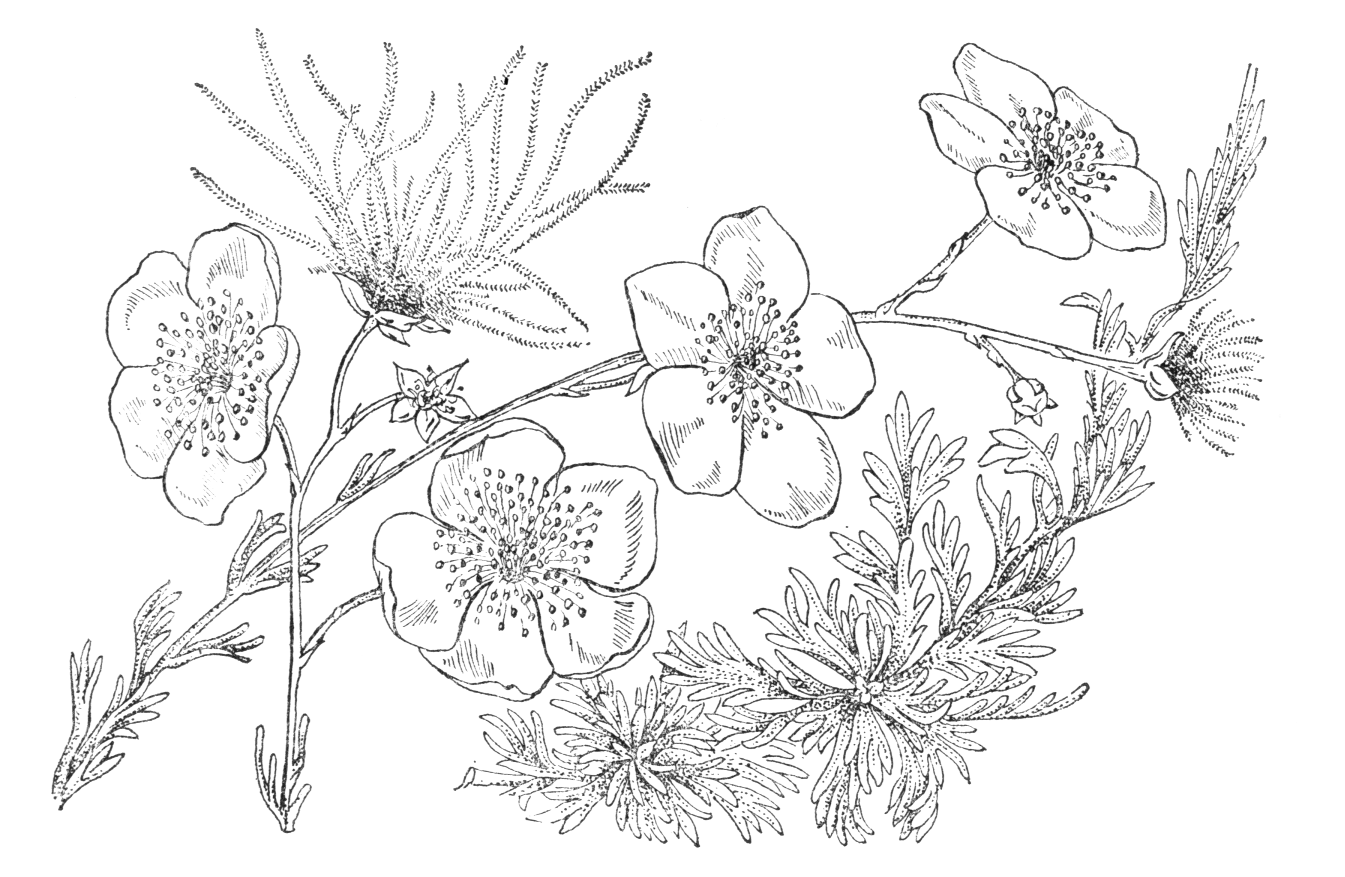Fallugia paradoxa
Credits
Article from Bean's Trees and Shrubs Hardy in the British Isles
Recommended citation
'Fallugia paradoxa' from the website Trees and Shrubs Online (treesandshrubsonline.
Genus
Synonyms
- Sieversia paradoxa D. Don
Other taxa in genus
A slender deciduous shrub 4 to 8 ft high, much branched below, more thinly above; branchlets white, covered with down. Leaves produced in clusters closely and alternately along the twigs, 1⁄2 to 2⁄3 in. long, 1⁄3 in. wide, cut usually into three or five (occasionally seven) narrow-linear lobes, recurved at the edges and 1⁄12 in. wide, dark green above, paler below, and covered all over with pale down. Flowers produced either singly or a few together on a raceme 11⁄4 to 4 in. long, from the end of the shoot or from the leaf-axis near the end. Each flower is 1 to 11⁄4 in. across, petals white; calyx 1⁄4 in. diameter, downy, with five ovate, pointed lobes; and five small bracts alternating with them. The heads of fruits are very handsome, each carpel being terminated by a slender style 1 in. to 11⁄2 in. long, clothed with silky hairs, the whole forming a dense feathery mass, 11⁄2 in. across. Flowers in July. Bot. Mag., t. 6660.
Native of S.E. California, New Mexico, Utah, and Nevada; introduced in 1877. This interesting and beautiful shrub is very rare in cultivation, and likely to remain so. Coming from the dry, sun-baked hills of the south-western United States, it finds in the English climate conditions almost the opposite of its native surroundings. It would probably be best suited on a warm slope in the drier parts of England. Elsewhere it will thrive best in well-drained soil at the base of a sunny wall.

